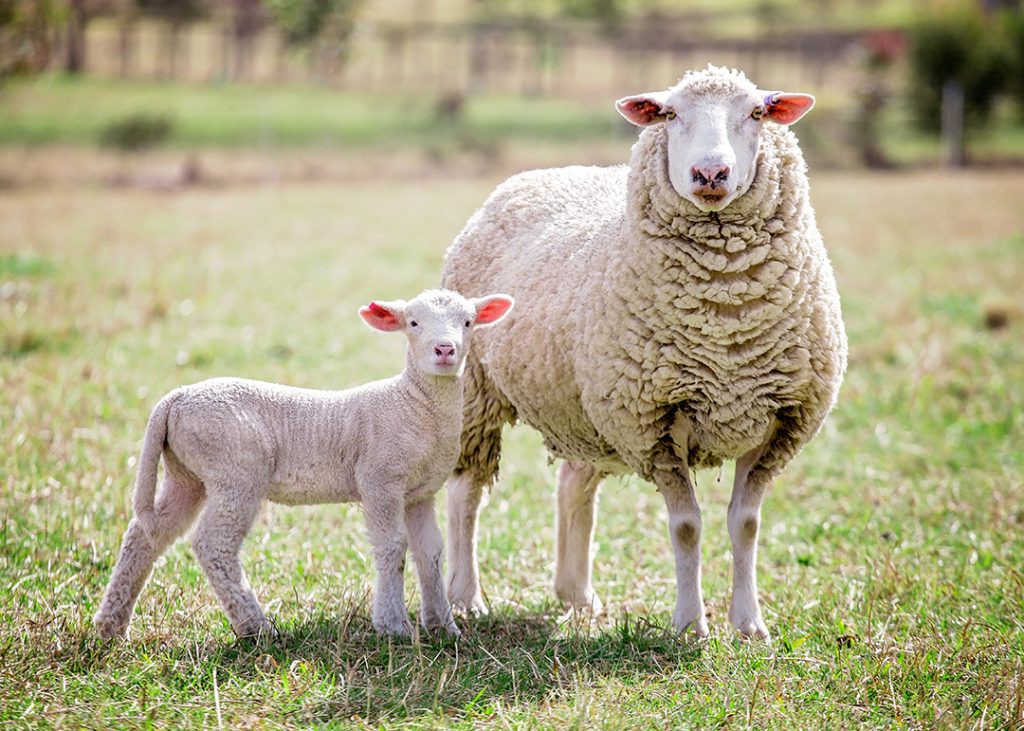
Sheep production is one of California’s low-profile agricultural industries, prominent in four Central Valley counties, but that’s enough to place the state right behind Texas as the country’s leading supplier of meat and wool.
Significant numbers of sheep are produced in and near Rio Vista and Lodi, even along the North Coast through Petaluma into Humboldt County. Flocks in these areas tend to be smaller, 100 or less, but additional people seem to be attracted to sheep production at this scale each year. Wherever they are maintained the animals tolerate California’s warmer climates, and produce enormous amounts of meat and wool
Leasing huge blocks of harvested alfalfa and allowing hundreds of sheep to forage there, restrained only by temporary fencing, is a common annual occurrence in the Central Valley’s sheep country. The animals will likely be accompanied for their temporary stay by a few beady-eyed and very protective dogs and a sheep herder or two housed in a house trailer
Sheep were introduced to California by the Franciscan fathers, who bred and raised them, recognizing their value as sources of both meat and wool. Their gentle natures and their willingness to forage in proximity to mission activities and people made them valuable assets to mission life
Experienced, knowledgeable sheep producers know that the animals fare best when they can forage over large areas and have a variety of feed. Because they are what are called close feeders they prefer short grasses, and moving them frequently to new grazing ground helps maintain their health. With enough land, commercial sheep farmers can move their animals from one pasture to another on a continuing basis.
The California complement of sheep in commercial production includes several varieties, identified by their growth characteristics and their adaptability to the land and climate where they are maintained. Some breeds are meatier than others, some produce more and finer wool, and some can become extremely mellow and friendly – ideal for a 4-H clubber anticipating showing an animal at the next county fair.
The level of both meat and wool production in California and probably Texas as well is dwarfed by the same figures from Australia and New Zealand, considered sheep rearing capitals of the world. The Christmas story reminds us that sheep and their shepherds were active in the Holy Land and Middle Eastern areas 2,000 years ago, maintained to some degree until today.
California’s sheep industry is inextricably bound to Basque culture, originating in a small area, not a country, of Europe in the western Pyrenees that straddles the border between France and Spain, only about 100 miles end to end. It borders the Bay of Biscay on the north. Its language and culture are said to be more ancient than any other in Europe, with the language pre-dating and showing no connection to the family of Indo-European languages.
For locals in Kern, Tulare, Fresno and Merced Counties in particular the influence of the Basque culture has led to a continuing and satisfying tradition of dining experiences. Bakersfield and Los Banos are homes to Woolgrowers restaurants, and Fresno boasts the venerable Basque Hotel. Several other typically Basque restaurants are accessible, with lamb as the basic ingredient, meals served family style and wine as more than an accompaniment.
The largest handler of sheep meat in the United State is Superior Farms in Dixon. Two out-of-state companies handle as brokers between 70 to 80 percent of the wool produced in the state.
As is the case with practically all things agricultural in California the University of California and its Cooperative Extension Services are intimately involved with the state’s sheep culture, providing background, production, care recommendations and experienced support.








